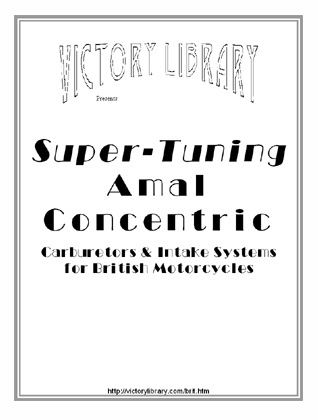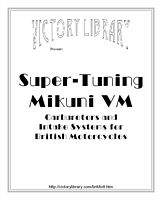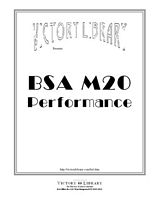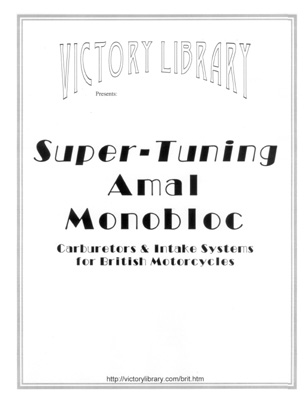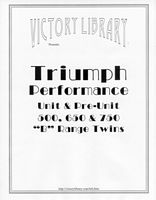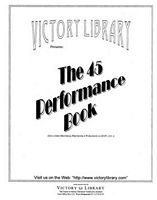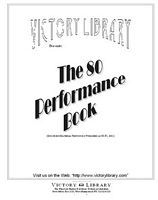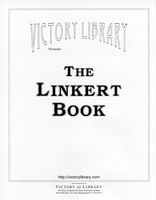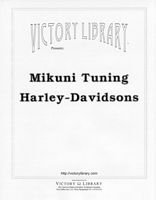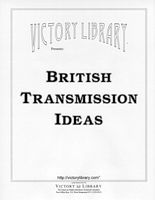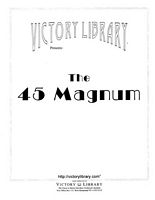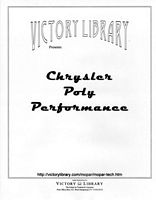Connecting
Rod vs. Stroke Analysis
The ratio between the connecting rod length
and the stroke length of a motor greatly affects the way it performs, and
how long it lasts. This ratio (normally represented by “n”) can be calculated
as follows:
Ratio “n” = Rod Length ÷ Stroke
The rodís length is measured (for this purpose)
from the center of the piston-pin opening to the center of the big-end bore, not overall.
There is a small range of ratios for most conventional piston engines:
the rod is between roughly 1.4 and 2.2 times the stroke length. Itís not
possible for the rod to be the same length as the stroke, and rods much
longer than twice the stroke make the motor very tall, and are not practical
for most purposes (although used for racing).
The rod angle must not encourage excessive
friction at the cylinder wall and piston skirt. A greater angle (smaller
value of “n”) will occur by installing a shorter rod or by increasing the
stroke. A reduced angle (larger value of “n”) will occur with a longer
rod or a shorter stroke.
If the rod length is decreased, or the
stroke is increased, the “n” ratio value becomes smaller. This has several
effects. The most obvious is the mechanical effect. Motors with low values
of “n” (proportionately short rods or long strokes) typically exhibit the
following characteristics (compared to high “n” motors): |
» |
physically shorter top-to-bottom & left-to-right (more oil pan, header, and air cleaner clearance) |
» | lower block weight (400 vs. 440, for example) |
» | higher level of vibration |
» | shorter pistons, measured from the pin center
to the bottom of the skirt |
» | greater wear on piston skirts and cylinder
walls |
» | slightly higher operating temperature &
oil temperature due to friction |
There are also differences in how the
motor breathes: |
» | intake vacuum rises sooner ATDC, allowing
bigger carburetors or intake port runner & plenum volumes to be used without loss of response |
» | on the negative side, a small or badly designed port will “run out of breath” sooner |
» | piston motion away from BDC is slower, trapping a higher percentage of cylinder volume, making the motor less sensitive to late intake valve closing (hot cams) |
Spark advance is also affected: |
» | earlier timing (more advance) is required,
as the chamber volume is larger (piston is farther from TDC) at the same point of rotation |
» | the motor may also be less knock-sensitive,
as the chamber volume increases more rapidly ATDC, lowering combustion pressure (this is useful for nitrous & supercharged motors) |
|
Effects of Long Rods |
| Pro: |
» |
Provides longer piston dwell time at &
near TDC, which maintains a longer state of compression by keeping the chamber volume small. This has obvious benefits: better combustion, higher cylinder pressure after the first few degrees of rotation past TDC, and higher temperatures within the combustion chamber. This type of rod will produce very good mid to upper RPM torque. |
» | The longer rod will reduce friction within
the engine, due to the reduced angle which will place less stress at the thrust surface of the piston during combustion. These rods work well with numerically high gear ratios and lighter vehicles. |
» | For the same total deck height, a longer
rod will use a shorter (and therefore lighter) piston, and generally have a safer maximum RPM. |
| |
| Con: |
» | They do not promote good cylinder filling
(volumetric efficiency) at low to moderate engine speeds due to reduced air flow velocity. After the first few degrees beyond TDC piston speed will increase in proportion to crank rotation, but will be biased by the connecting rod length. The piston will descend at a reduced rate and gain its maximum speed at a later point in the crankshaft’s rotation. |
» | Longer rods have greater interference with
the cylinder bottom & water jacket area, pan rails, pan, and camshaft - some combinations
of stroke length & rod choice are not practical. |
To take advantage of the energy that occurs within the movement of a column of air, it is important to select manifold and port dimensions that will promote high velocity within both the intake and exhaust passages. Long runners and reduced inside diameter air passages work well with long rods.
Camshaft selection must be carefully considered. Long duration cams will reduce the cylinder pressure dramatically during the closing period of the intake cycle. |
Effects of Short Rods
|
| Pro: |
» | Provides very good intake and exhaust velocities at low to moderate engine speeds causing the engine to produce good low end torque, mostly due to the higher
vacuum at the beginning of the intake cycle. The faster piston movement away from TDC of the intake stroke provides more displacement under the valve at every point of crank rotation, increasing vacuum. High intake velocities also
create a more homogenous (uniform) air/fuel mixture within the combustion
chamber. This will produce greater power output due to this effect. |
» | The increase in piston speed away from
TDC on the power stroke causes the chamber volume to increase more rapidly
than in a long-rod motor - this delays the point of maximum cylinder pressure
for best effect with supercharger or turbo boost and/or nitrous oxide. |
» | Cam timing (especially intake valve closing)
can be more radical than in a long-rod motor. |
| |
| Con: |
» | Causes an increase in piston speed away
from TDC which, at very high RPM, will out-run the flame front, causing
a decrease in total cylinder pressure (Brake Mean Effective Pressure) at
the end of the combustion cycle. |
» | Due to the reduced dwell time of the piston at TDC the piston will descend at a faster rate with a reduction in cylinder pressure and temperature as compared to a long-rod motor. This will reduce total combustion. |


